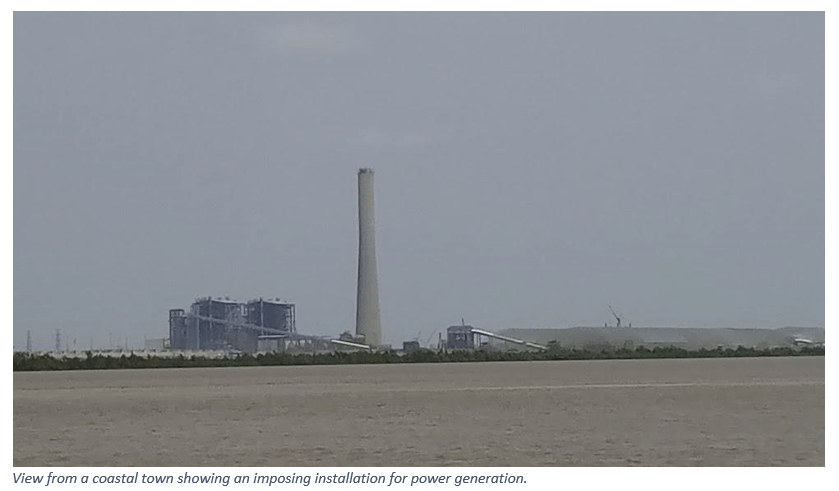
By Muhammad Taher, Evaluation and Research Consultant, Bangladesh
In recent years, the coastal area of Bangladesh has seen a major increase in investments in the development of physical infrastructures and manufacturing industries. Large sea ports, special economic zones, and large power plants are being established one after another. At the same time, projects to build “resilient urban centres” (Municipalities) are being busy renovating and building new roads, embankments, cyclone shelters, buildings for different purposes, and water supply and drainage systems. While these initiatives are generally welcomed, technical specialists express their concerns regarding negative environmental impacts. They have been particularly critical of the massive pouring of concrete in these areas, and the rising level of emissions from the factories and power plants. The combined effects of these are believed to be responsible for the increasing level of heat in the area, which has now started to claim human lives. According to one report, heat stroke claimed about ten lives in April 2024 alone when the temperature rose above 40 degrees Celsius. According to newspaper reports, over seventy per cent of the population of Bangladesh was affected by the heatwave (IFRC, 4 May 2024 in https://reliefweb.int/disaster/ht-2024-000056-bgd). The coastal region in the South of the country has experienced relatively higher increases in heat compared to other areas.
Programming orientation
Responding to these concerns, engineers and social development professionals have recommended ‘nature-based green solutions’ (NbS, in short). This approach helps people adopt climate-adaptive and environment-friendly development interventions that emphasise the creation of green space, the planting of trees, and the promotion of natural drainage into the urban environment. Bangladesh National Adaptation Plan (NAP, 2022) also calls for the expansion and conservation of green and blue infrastructure for the improvement of urban environments and drainage systems. It commits to undertake action research for developing and exploring the use of ecosystem-based adaptation and nature-based solutions.
Following on, the experts engaged in the development of coastal Municipalities in Bangladesh, emphasised different nature-based solutions to minimise the potential negative effects of the proposed physical infrastructures. Besides, they have a particular focus on building awareness about environmental safety, early warning systems, disaster risk reduction, and adaptive actions to fight the impacts of climate change. However, it is believed that many of the planning and policy documents do not elaborate on the details of what tools and means will enable them to achieve those objectives. The local government institutions (i.e., Municipalities) appear to be left with directions on “what to do but not how to do it”.
How to implement green solutions
Adaptation investments have traditionally favoured ‘hard’ or ‘grey’ infrastructures (referring to the pouring of concrete for infrastructure), which typically focus on a single or small range of purposes, such as embankments for a flood protection scheme. The new suggestions, however, includes NbS adaptation options which are believed to be two to five times more cost-effective than traditional ‘hard/grey’ infrastructure. The green-solution investments can provide a variety of benefits to society. Besides the reduction of impacts of floods, cyclones, and heat stress, they can additionally offer benefits such as, recreational opportunities, increased tourism, biodiversity conservation and better health. If a labour-intensive approach for the construction work is needed and adopted, the local communities will have employment benefits. Vulnerable and marginalised groups will particularly benefit from NbS investments as they (green solutions) often reduce climate risks for indigenous peoples, women, the elderly, and people with disabilities. Community groups directly dependent on natural resources or those who are physically exposed to climate impacts may see many benefits in them. However, the diverse range of intangible benefits produced by this kind of actions are sometimes overlooked by policymakers. Community groups may also fail to fully appreciate the co-benefits generated by these ‘alternative’ approaches due to a lack of technical knowledge or lack of awareness about the far-reaching impacts of ‘green development’ process.
Photo caption: View from a coastal town showing an imposing installation for power generation.
Disclaimer: The views expressed in this piece are those of the author/s and do not necessarily reflect the views or policies of AIDMI.